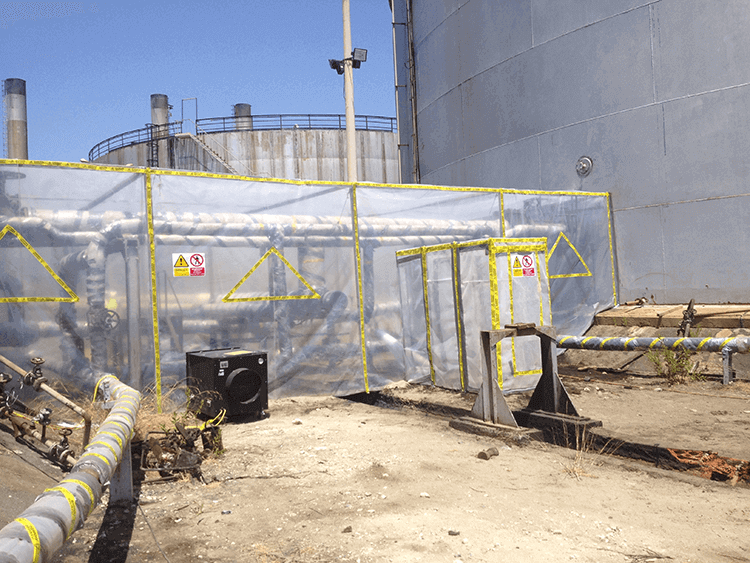Disposal New Methods
Asbestos containing materials are generally categorized as friable or nonfriable. Friable asbestos is characterized as any material containing more than one percent asbestos that can be crumbled, pulverized, or reduced to powder by hand pressure. In this friable condition, asbestos fibers may become airborne and pose a potential health risk.
Whenever asbestos containing materials are accepted at a landfill, care should be taken during disposal so the materials do not become friable. These materials should not be sanded, ground, cut, abraded, compacted, or otherwise disturbed. Asbestos containing material should always be disposed of according to stipulations in the facility’s air permit.
Regulations governing the handling of asbestos containing materials (commonly known as NESHAP) are in place to ensure the proper management of these materials to protect human health and the environment. Asbestos containing materials from a NESHAP regulated activity should always be accompanied by a manifest when it arrives at a disposal facility and needs to be managed in accordance with applicable rules and permit requirements.
While NESHAP regulates several aspects of asbestos management, landfill operators should be aware of the following levels of disposal requirements:
NESHAP-regulated, friable and Category II nonfriable asbestos: Friable and Category II nonfriable asbestos containing material from a NESHAP-regulated activity will be manifested prior to removal from the work site. Friable and Category II nonfriable asbestos containing material from a NESHAP-regulated activity may only be disposed at solid waste and C&DD facilities with a NESHAP condition in their air permit. The landfill operator must retain a copy of the manifest and log the material as asbestos in the log of operations. Disposal of the asbestos must occur in a designated area of the landfill, as required by asbestos regulations and the facility’s air permit.
NESHAP-regulated, Category I nonfriable asbestos: Category I nonfriable asbestos containing material from a NESHAP-regulated activity will be manifested prior to removal from the work site. A NESHAP condition in the facility’s air permit is not required for disposal of Category I nonfriable asbestos at a solid waste landfill or C&DD facility. However, the landfill operator must comply with all terms and conditions of any air permit issued to the facility. The landfill operator must retain a copy of the manifest and log the material as asbestos in the log of operations. This material needs to be managed in such a manner that does not cause the asbestos to become friable and in accordance with all stipulations in the facility’s air permit. If any asbestos material becomes friable at the disposal facility, the operator is required to wet and encapsulate the waste to prevent visible emissions and apply at least twelve inches of cover.
NESHAP-Exempt asbestos: A NESHAP condition in the facility’s air permit is not required for disposal of NESHAP-exempt asbestos at a solid waste landfill or C&DD facility. However, the landfill operator must comply with all terms and conditions of any air permit issued to the facility. Generally, Category I nonfriable asbestos and any asbestos containing materials from the demolition and renovation of residential or nonresidential structures with limited asbestos (less than 260 linear feet on pipes or 160 square feet on other components) is exempt from the NESHAP standards. These materials will not be manifested; therefore, in most instances the landfill operator will be unaware of its presence in the load of waste. If exempt asbestos containing materials are known or suspected to be accepted by a landfill, the operator should consult with its safety officer or OSHA and take measures to protect employee safety.



